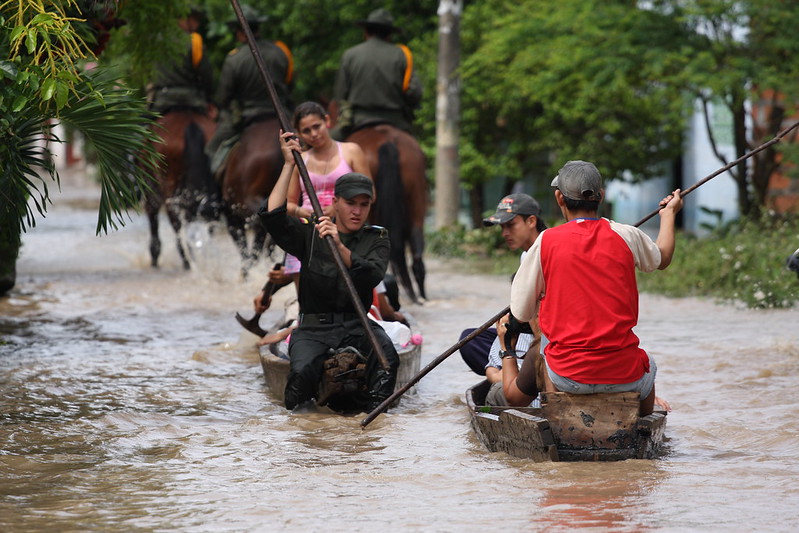
Colombia, renowned for its breathtaking landscapes and abundant biodiversity, is confronting an increasingly grim scenario due to the adverse impacts of climate change. Recent studies conducted by Invemar and IDEAM have cast light on the critical vulnerabilities of the nation’s coastal and island regions. These vulnerabilities encompass a spectrum of climate-related threats that extend from coastal flooding to agricultural disruption, imperiling livelihoods, infrastructure, and the environment.
Coastal Vulnerabilities
The Colombian coastline, including its islands, grapples with multifaceted challenges, as the statistics paint an alarming picture:
- Over 4.9% of crop and pasture lands along the Caribbean coastal zone face the risk of flooding, impacting agriculture, a fundamental economic pillar.
- The manufacturing industry, a significant driver of Colombia’s economy, is highly vulnerable to climate impacts.
- Disturbingly, nearly 45% of the land road network on this coastline is under the threat of flooding.
- The Caribbean gem, the island of San Andrés, is in dire straits. The alarming 17% of territory susceptible to flooding endangers crucial infrastructure like roads, the airport, and hotels. Moreover, the aquifers supplying 82% of the island’s drinking water are under threat from saline intrusion. Forecasts further predict a considerable increase in rainfall: 15% by 2050 and a staggering 20% by 2080, poised to disrupt the island’s sanitation systems, exacerbating the water crisis.
Impending Floods
By 2030, an estimated 2% of the total population in Colombia will feel the impact of flooding, leading to significant economic losses equivalent to around 2.2% of the country’s GDP. Additionally, Colombia’s vast mangrove ecosystems, crucial for coastline protection and a hub of biodiversity, face threats of loss due to rising sea levels.
Coral Reefs in Peril
Prolonged exposure of coral reefs to high temperatures is triggering bleaching, leading to coral death and the loss of their vital environmental services, particularly in safeguarding coastlines from extreme events like swells and hurricanes.
Soil Erosion and Avalanche Threats
The ongoing erosion of lands due to intensive farming practices and livestock rearing raises concerns of avalanches in neighboring moors.
Vulnerable Water Resources
Altering hydrological regimes, particularly in the Andean region and regions like La Guajira and Nariño, will impact water resources, with repercussions for both economic activities and population sustenance.
Threat to Vegetation Covers and Ecosystems
The reduction in glacier coverage in Colombia will significantly affect water availability for communities relying on these water sources, including cities like Manizales, Pereira, and Ibagué.
Looming Agricultural Crisis
Colombia’s agricultural sector faces a perilous outlook, with an increase in the potential for desertification of over 3.5 million hectares of land. This transformation will impact a third of current agro-ecosystems.
Health Risks
Climate change increases the vulnerability of areas to diseases like malaria and dengue, with a larger population exposed to floods, further straining health systems and services.
Colombia stands at a critical juncture, and addressing these vulnerabilities is essential for safeguarding its people, environment, and economic prosperity. As the nation grapples with climate change, taking decisive measures to adapt to and mitigate these threats becomes a top priority. International collaboration and sustainable practices will play a pivotal role in securing Colombia’s future in an era of unprecedented climate challenges.
See all the latest news from Colombia and the world at ColombiaOne.com. Contact our newsroom to report an update or send your story, photos and videos. Follow Colombia One on Google News, Facebook, Instagram, TikTok and subscribe here to our newsletter.


